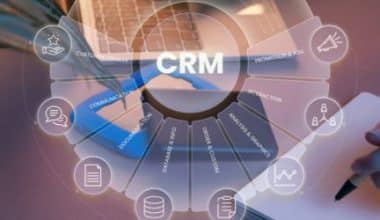In recent years, several companies have integrated HR technology into their operations. Through social, mobile, analytical, and cloud technologies, the transition to the digital HR paradigm enables firms to optimize human resources more efficiently and consistently. Priorities in human resource technology include analytics, virtual technology, and updated learning systems.
Following on from the post about HR trends in 2023 and beyond, we looked at what HR technology trends you should be aware of this year.
What is HR Technology?
Human Resources technology (HR tech) is a broad phrase that refers to the software and hardware technology used to automate critical HR operations. HR tech acts as a co-pilot, assisting HR professionals in streamlining time-consuming processes such as:
- Filing
- Communication services
- The acquisition of talent
- Management of talent
- Compensation administration
- Administration of benefits
- Management of performance
- Storage, organization, and analysis of data
Why Should HR Leaders Be Concerned About HR Technology?
HR technology does more than just minimize paper clutter and administrative effort; it also aids in the management of the complete employee lifecycle. HR technology has become vital in companies with hundreds or even thousands of employees. The HR professionals can focus on enhancing recruitment procedures, assisting managers, and increasing engagement, retention, and productivity with the help of management.
What Can HR Leaders Do To Make the Most of HR Technology?
HR directors may embrace new technological innovations if they plan ahead. The following tips can assist HR in maximizing HR technology to create success in the sink-or-swim work world:
- Increase and update your knowledge: Acquire a solid understanding of the technology to gain the most benefits. Maintaining a high level of competency also guarantees that HR can serve as a model for professionals and managers learning to use new technology.
- Policy on technology should be updated: HR technology advancements affect the way people work, thus HR rules must be updated on a regular basis to remain fair, consistent, and unbiased.
- Cooperate with IT: While IT handles the gear and software used in hiring, training, and collaborating, HR is front and center, supporting the people who use this technology. HR and IT experts may work together to avoid problems and boost employee satisfaction.
- Develop the workplace community: Organizations must be ready to adapt to the regular waves of technology. Also, agility can be increased in organizations by fostering a culture of trust, collaboration, and respect. These ideals lay the groundwork for sound, well-informed decisions, and quick mobilization.
What Role Does Technology Play in Human Resource Management?
Human resource managers use technology to make their tasks easier and to make better decisions. Nowadays, there is an app for that. This is especially true when it comes to personnel management in a business.
Aside from personnel management, automation techniques aid in the reduction of paper usage and the organization of data entry. Employees, for example, are not required to complete paper forms that must then be entered by HR personnel. All of this can be accomplished through the use of a centralized system, such as membership management software.
Here are some examples of technology’s application in human resource management.
#1. Employee Administration
Employee management is concerned with assisting employees in reaching their maximum potential. It also aids the organization in meeting its objectives. It is a thorough procedure that covers all aspects of human resources. This involves hiring, payroll administration, and talent management.
All of these operations are enhanced by an automated employee management system. It enables companies to conduct more consistent, methodical, and formal evaluations.
It explicitly provides:
- Improved employee-manager communication;
- Better training programs; and
- Effective performance appraisals.
Membership management software, for example, aids in the simplification of administrative tasks. This includes dealing with dues and accounts receivable. With the correct equipment, such jobs can be performed in minutes. A corporation can fulfill its objectives while maintaining employee happiness by utilizing such software.
HR innovations that increase management and efficiency, such as using a gross-up calculator to take the pain out of payroll, result in the company’s overall performance. Organizations, regardless of size or industry, strive to improve organizational performance.
Managers must ensure that all departments are working to improve their procedures and controls. They should also focus their operations on improving the company’s competitiveness. All of this is possible with tools such as association management software.
#2. Employee Involvement
Performance management is increasing including employee engagement applications. To keep employees involved in their work, these platforms and apps use a variety of tactics.
Employee engagement can be increased by using association management software. Businesses can communicate information by using applications with posting and commenting options. Furthermore, it allows employees to share their opinions about it.
Gamification tactics also aid in employee engagement by making apps engaging.
#3. Performance Management
Employers have also begun to automate systems for evaluating employee performance. Most performance management programs have interactive elements. This enables employee input as part of the continuous performance management process.
Employee retention and productivity can be considerably improved with this type of performance management.
Companies can begin with technology-assisted evaluations. These evaluations maintain track of critical information about employees. You may quickly and easily assess their strengths and flaws. It also keeps track of employees’ areas for improvement.
Workforce analytics makes use of individual performance management and skill data. Applications use the appraisal results to generate customized learning programs for employees. These aid employees in efficiently planning their career routes and increasing their skill sets.
#4. Development and Training
A lot of training nowadays is done digitally and is customized to the needs of the individual. It helps HR teams to monitor progress and assess the success of specified goals. For staff development, HR departments deploy online training sessions and webinars. They are also ideal for teams that are dispersed around the country.
#5. Recruitment
Hiring is one of the most crucial roles of HR professionals. Various technical solutions assist them in maintaining a smooth recruitment process. The bulk of job openings are now offered online. Furthermore, applications are processed through a single platform.
This makes it easier and faster to review application forms. Recruiters use resume screening applications to eliminate applicants who are not a good fit for the job.
#6. Employee Scheduling and Monitoring
Overlapping leave requests, for example, can wreak havoc on a company’s efficiency. Professionals can track employee availability with the correct HR software. It also aids in the correct management of schedules. This allows the organization to function at peak efficiency throughout the year.
#7. Documentation
The HR department is responsible for ensuring that employees have timely access to critical information. This enhances transparency within the organization and fosters a trusting atmosphere. Both are necessary for staff productivity.
Furthermore, HR technology employs a cloud-based system to store critical employee data. This guarantees that the data is accessible throughout the day. Furthermore, it ensures that it is safe even in the event of a physical tragedy.
Paperwork is kept to a minimum because all data is saved on cloud-based servers. You may access publications, handbooks, and training manuals with a few mouse clicks.
Human resource technology can be used to communicate information in a timely and effective manner. Talent Management Software and AI-powered chatbots are two examples.
#8. Integrated Management System.
HR must now work with various divisions within the organization. Traditionally, they have shared tasks with payroll. They must now share information and resources with other departments. The legal department, executives, and team leaders are among them.
The best management systems facilitate sharing. They make certain that all departments have access to the information they need to fulfill their responsibilities. This level of technical integration is critical. It assists businesses in developing a corporate community, tracking employee behavior, and increasing engagement and productivity.
Examples of HR Technology
Keeping up with the newest technological advances ensures that human resource operations function smoothly. This is accomplished through the use of automated software and management systems that assess and compile data for easy access.
A successful HR department understands how to maximize the benefits of technology help by incorporating the best collaborative software specifically designed for the given goal. Some examples of HR technology include:
#1. Core HR Technology
All necessary administrative data must be evaluated and stored. Inventory management, payroll, time and attendance, benefits administration, basic employee data and analytics, and employee communications are just a few examples.
#2. Talent Management Technology
The emphasis on employee accountability, acquisition, and disposition distinguishes this from basic HR technology. Talent management technology’s goal is to provide a digital platform that promotes and monitors employee growth.
Talent acquisition software is one example of these technologies, which can be defined by the particular technology required to identify, attract, and settle a new employee.
What are Some Examples of HR Technology Companies?
HR technology is constantly changing. Optimal people management software is becoming increasingly important in many businesses. The nature of distant labor creates an impersonal interaction between HR and potential talent, making talent management and acquisition challenging in post-pandemic existence.
It is up to HR technology specialists to find answers to difficulties in a continuously changing work environment. HR Technology companies come in various forms and sizes.
The following are the top three HR Software Companies in 2023:
#1. First Advantage
First Advantage’s technical solutions, which serve over 35,000 businesses, leverage their expertise in verifications, safety, screening, acquisition, and management to successfully eliminate risks for their global customer base.
#2. Cornerstone
Cornerstone’s people development solutions, which have 75 million users, include complete recruiting tools, a personalized learning platform, cutting-edge training material, development-driven performance management, and holistic employee data management and insights.
#3. iCIMS
With their cloud-based tools, iCIMS helps firms to seek, persuade, hire, and support the ideal talent. Leading the world in talent acquisition services, iCIMS’ software resources are used by 2.4 million global users, including 40% of the Fortune 100.
HR Technology Conferences
You might attend HR technology conferences to stay current on technological improvements. These events allow HR professionals to network, hone their skills and knowledge, and learn about emerging workplace trends. Here are five important HR technology conferences to attend:
- Transform. This symposium focuses on integrating tech innovation and entrepreneurship through a people-driven approach.
- SHRM’s annual conference. SHRM’s all-encompassing educational networking experience is the conference to attend if you can only make it to one.
- SHRM Inclusion. This conference emphasizes DEI&B principles to help HR leaders support a more inclusive workforce.
- From Day One. This forum offers online and in-person events to help you build stronger relationships with your people by establishing your company values.
- Inspire HR. This Tennessee-based conference is the place to network, hone your HR skills, and get inspired.
What HR Technology Trends Should You Be Aware of?
Every year, new technological trends emerge and acquire traction. Let’s look at three current and widespread trends:
- Technology that allows for self-service: People prefer having quick access to their documents, whether it’s a pay stub, a tax form, or a healthcare record. When professionals are trained to use employee self-services, they will not need to call HR for assistance. They’ll be able to handle the administrative tasks on their own.
- Options for working from home: Technology has accelerated the transition to remote work. While remote work is still expanding, Zoom, various types of HRIS and collaboration platforms such as Slack have played an important part in allowing individuals to work from home and take a day or more off.
- Work-life balance is important: Many professionals now prioritize their own well-being. Working from home can help you achieve a better work-life balance, but it also introduces new problems. HR technology enables HR, managers, and team members to connect, create connections, and address mental health concerns that may arise as a result of workplace stress or working from home.
- Hiring on a global scale: As remote work becomes increasingly widespread, many companies are recruiting employees from other countries to save money and access a larger talent pool. Global hiring involves a number of legal issues, however, there are HR technology companies and Employer of Record (EOR) service providers that use software to make hiring globally as simple as hiring locally.
How Can HR Technology Help to Improve Business Culture?
The contemporary work culture is dependent on HR technology to survive. HR technology enables managers and HR to direct onsite and remote teams and provides a framework for remote professionals to develop a community. HR technology has also relieved HR professionals of administrative duties, allowing them to focus on improving the employee experience, increasing engagement, and cultivating a healthy company culture.
Why Should HR Technology Be Included in the Current HR Strategy?
Technology is pervasive in the workplace, from document creation to data analysis. HR, like any other department, requires technology to help streamline its job and add value to the organization. While technology requires a learning curve and integration process, it allows HR professionals to develop a plan that promotes the company’s vision, values, and business goals.
What Is the Relationship Between HR Technology and Digital Transformation?
HR digital transformation efforts simplify HR operations and provide efficient data-driven alternatives to existing systems. It is a two-pronged method that transforms both the workforce and the workplace culture.
AI is changing the way HR processes work in the twenty-first century. For example, technology leaders such as IBM, which is leading the way in digital HR solutions, are implementing dedicated platforms that allow for a fully configurable digital learning experience.
Conclusion
The implementation of digital transformation efforts is altering the way HR departments operate and facilitating best practices. The expansion of automation and integrated software solutions will continue to present HR departments and technology companies with the opportunity to generate long-term growth through the use of strategies that embrace technology and innovation.
- WHAT IS A TALENT MANAGER? Job Description, Salary & Software Solutions
- WHAT IS TALENT ACQUISITION: Top Strategies, Software, Manager & Coordinator
- EMPLOYEE ENGAGEMENT TOOLS: How It Works, Best and Free Tools
- RESOURCE ALLOCATION IN PROJECT MANAGEMENT: All You Need To Know
- PROFESSIONAL DEVELOPMENT: Things You Need to Know






